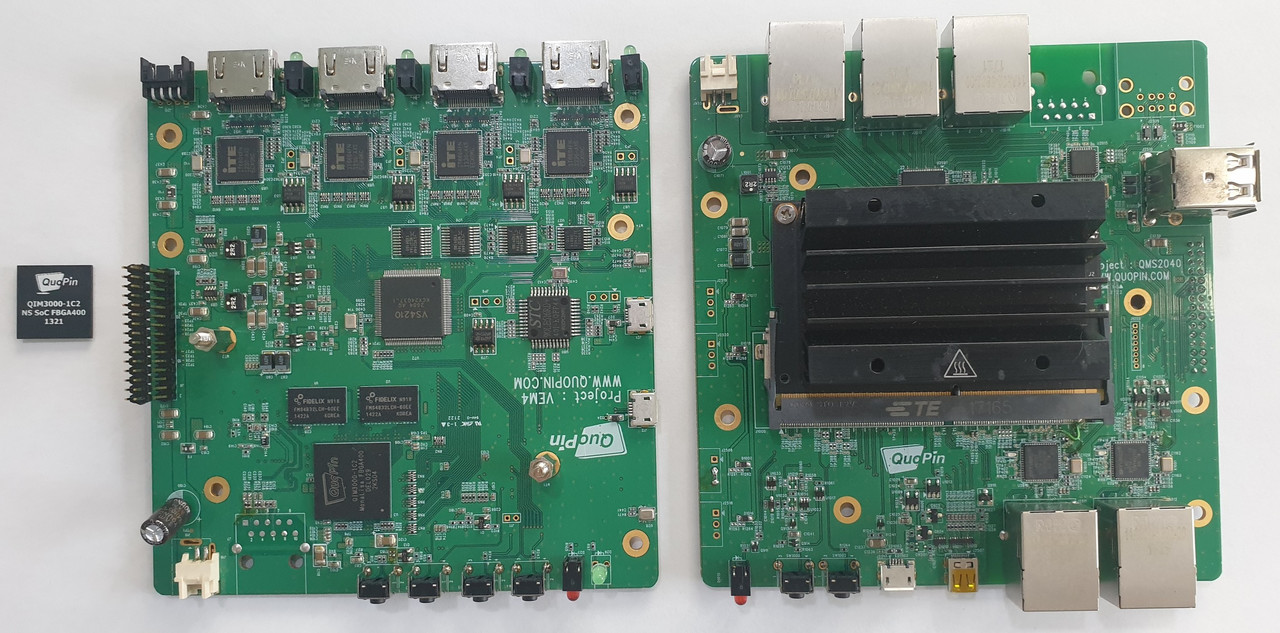
A South Korean manufacturer has developed an 'Edge AI Integrated Video Transmission Module' that utilizes edge artificial intelligence (AI) to analyze high-definition videos and transmit them in real time. This device assists in monitoring and controlling unmanned drones deployed in hazardous construction sites or environments that are inaccessible to humans.
Quopin, a fabless company led by CEO Sang-hoon Lee, announced on the 8th that they had developed an edge AI-integrated video transmission module. This module combines their self-developed ultra-low latency video remote transmission semiconductor, ' Monalisa II', with NVIDIA's edge AI board, Jetson Nano. It has been released in both module and device forms
Monalisa II is a semiconductor module that compresses full HD videos using H.264/265 codecs, generates IP packets with its self-developed network-specific processor, and transmits them in real-time or near real-time speeds through wired or wireless communication networks.
By utilizing Monalisa II, videos captured on-site can be received in full HD resolution within 0.1 to 0.2 seconds at a remote control center.
The recently developed 'Edge AI Integrated Video Transmission Module' connects to NVIDIA's Jetson Nano board, compresses videos captured by cameras, and simultaneously analyzes them using edge AI, sending the results together.
Quopin recently delivered this technology to Company P for industrial drone monitoring purposes. They also plan to develop and supply intelligent surveillance camera devices for remote manufacturing process innovation at Company L using edge AI and ultra-low latency video transmission devices.
They are also actively pursuing the establishment of a consortium with edge AI and camera companies to supply their technology to naval submarines and private fishing vessels. This project involves equipping 12 cameras to utilize AI in detecting the types, nationalities, and purposes of ships visible in panoramic views.
In the future, Quopin plans to expand its supply fields beyond robots and drones to include heavy machinery, autonomous mobility, intelligent traffic control systems, and 5G specialized networks.
They are also considering the development of 'Monalisa III,' an upgraded version of Monalisa II that incorporates edge AI functionality into a system-on-chip (SoC) format, creating an AI chip. The chip, named Sophia SoC I, is scheduled to be released in late 2024 and will be supplied for military purposes or extreme situations to test operations such as remote control of unmanned submarines.
Currently, the edge AI functionality is connected in a modular form, but integrating it into an SoC enables significant reductions in size, power consumption, and costs.
CEO Sang-hoon Lee stated, "The current edge AI modules have excessive capabilities compared to their intended use. In the development of the integrated SoC, we are pursuing ways to lower the price by including only necessary functions." He further added, "Based on recently concluded or ongoing supply contracts in South Korea, we intend to use them as references for our entry into overseas markets."
Reporter juyoung Lee (juyoung09@aitimes.com)


